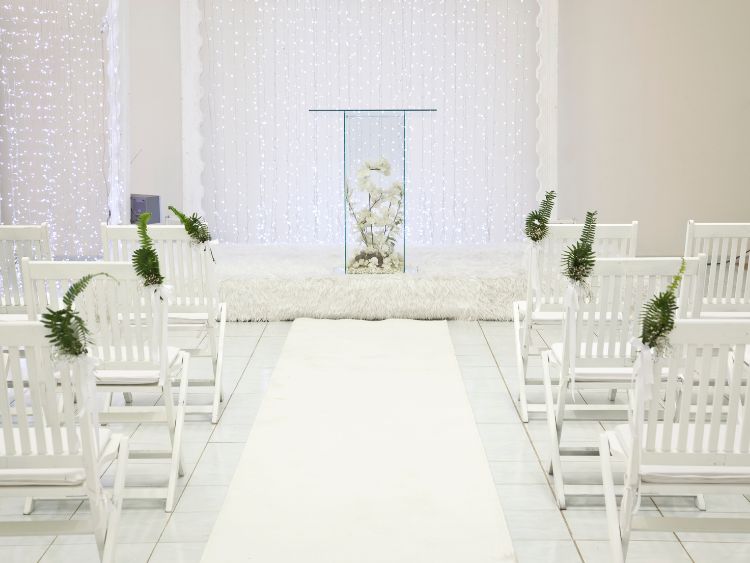Weddings are magical, aren’t they? But when it comes to planning, choosing the perfect wedding dress is often the most exciting—and nerve-wracking—part. Whether you envision yourself walking down the aisle in a sleek satin gown or a flowing ballgown, this guide has got you covered.
From understanding dress styles to knowing what questions to ask, we’ll take you through everything you need to make this monumental decision stress-free. So, let’s dive right in, shall we?
Table of Contents
- Popular Wedding Dress Styles
- How to Choose the Right Fabric
- Tips for Shopping for Wedding Dresses
- Budgeting for Your Wedding Dress
- FAQs About Wedding Dresses
- Authoritative Links
Popular Wedding Dress Styles
First off, let’s talk about styles. Wedding dresses come in so many shapes and silhouettes, it’s easy to get overwhelmed. But don’t worry—once you know the basics, you’ll quickly narrow down your favorites.
1. Ballgown
The quintessential “princess” dress! This style features a fitted bodice and a voluminous skirt. It’s perfect for brides dreaming of a fairytale moment.
2. A-Line
Flattering for almost every body type, the A-line dress flares out gently from the waist, creating a balanced silhouette.
3. Mermaid
Talk about va-va-voom! The mermaid dress hugs your body until it flares out dramatically at the knees, creating a stunning, curve-hugging look.
4. Sheath
Simple yet chic, sheath dresses follow your body’s natural line. They’re ideal for minimalist brides who want a modern vibe.
5. Tea-Length
This retro-inspired style hits below the knees, making it great for casual weddings or brides who want to show off some fabulous shoes.
How to Choose the Right Fabric
Now that you have an idea of the styles, let’s talk fabrics. After all, the fabric can make or break how your wedding dress feels and flows.
Common Fabrics for Wedding Dresses
- Satin: Classic and smooth, perfect for structured gowns.
- Chiffon: Lightweight and airy, ideal for boho or beach weddings.
- Lace: Timeless and romantic, often used for detailing.
- Tulle: Think ballerina vibes—light and ethereal.
- Organza: Similar to tulle but with a crisper texture.
Fabric Tips
- If you’re having a summer wedding, opt for lighter fabrics like chiffon or organza.
- For a winter ceremony, satin or velvet can keep you warm while looking luxurious.
Tips for Shopping for Wedding Dresses
Shopping for a wedding dress can feel overwhelming, but with the right approach, it can be a breeze.
1. Start Early
You’ll need at least 6-8 months to account for ordering and alterations.
2. Set a Budget
This includes your dress, alterations, and accessories.
3. Do Your Homework
Browse online or in magazines to get a sense of what styles you love.
4. Bring Support
Take trusted friends or family, but keep the group small to avoid conflicting opinions.
5. Be Open-Minded
Sometimes the dress you didn’t expect to love is the one that steals your heart.
Budgeting for Your Wedding Dress
Speaking of budgets, did you know the average cost of a wedding dress is around $1,000 to $1,500? However, you can find gorgeous options at every price point.
Budget-Friendly Tips
- Look for sample sales or trunk shows.
- Consider buying pre-owned dresses.
- Rent your dress if you don’t plan on keeping it forever.
FAQs About Wedding Dresses
How far in advance should I start shopping for my wedding dress?
It’s best to start shopping about 8-12 months before your wedding. This allows plenty of time for ordering and alterations.
How much should I budget for alterations?
Alterations typically cost $200-$600, depending on the complexity of the changes.
What’s the difference between white and ivory dresses?
White is a bright, pure shade, while ivory has warmer undertones, which can look softer on the skin.
Can I wear a colored wedding dress?
Of course! Many brides opt for blush, champagne, or even bold hues to express their unique style.
Conclusion
Finding the perfect wedding dress is a journey, but it’s one you’ll cherish forever. Remember to trust your instincts, stick to your budget, and enjoy every step of the process. After all, this dress isn’t just fabric and lace—it’s the one you’ll say “I do” in.
Authoritative Links
- Wedding dress styles and tips: www.brides.com/wedding-dresses
- Budgeting for your gown: www.theknot.com/wedding-dress-cost
- Wedding dress fabric guide: www.weddingwire.com/wedding-dress-fabric

